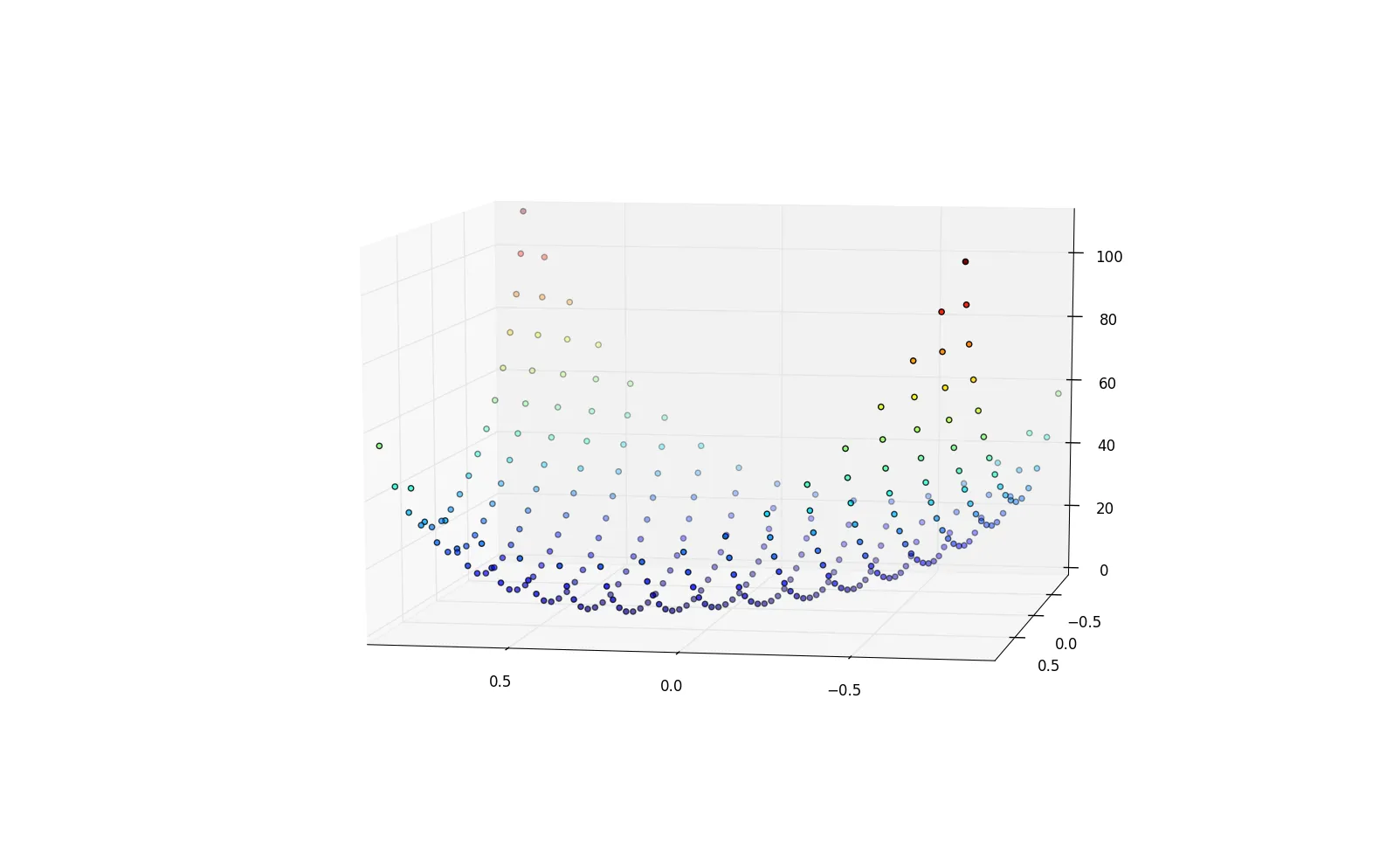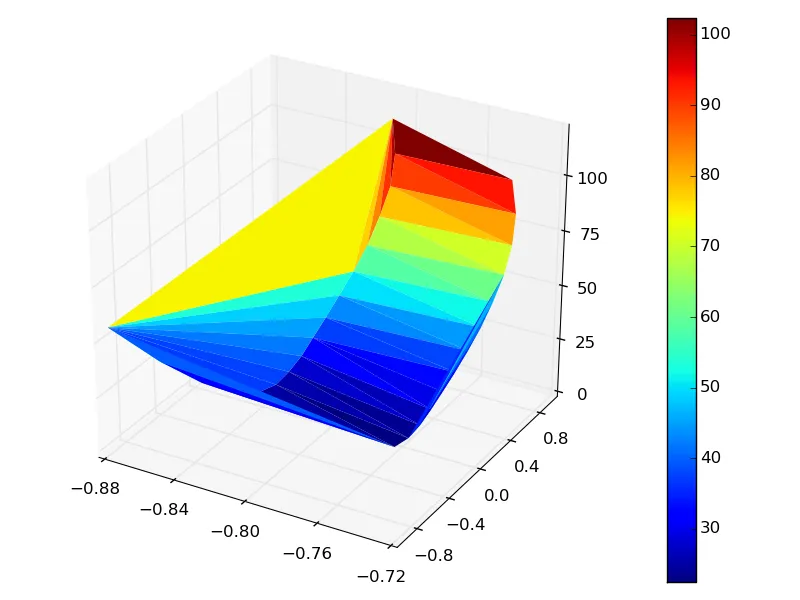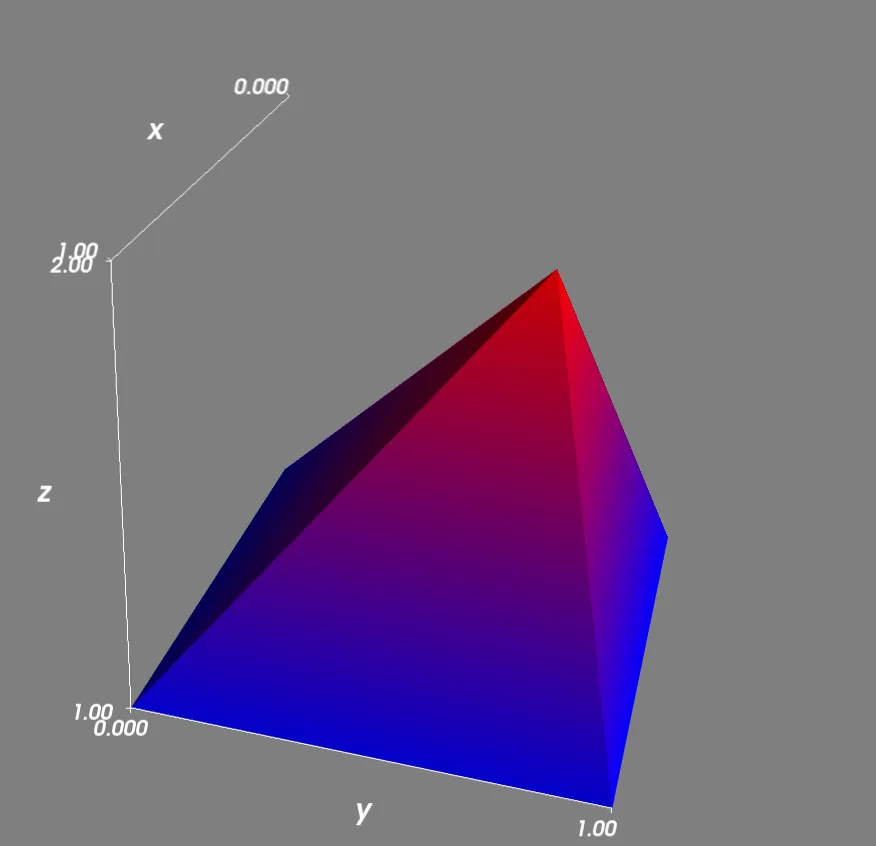我有很多(289个)带有xyz坐标的3D点,看起来像这样:
没有相等的X和Y值。X的取值范围是从-0.8到0.8,Y的取值范围是从-0.9到0.9,Z的取值范围是从0到111。
如果可能的话,如何使用这些点绘制3D曲面图?

for i in range(30):
output.write(str(X[i])+' '+str(Y[i])+' '+str(Z[i])+'\n')
-0.807237702464 0.904373229492 111.428744443
-0.802470821517 0.832159465335 98.572957317
-0.801052795982 0.744231916692 86.485869328
-0.802505546206 0.642324228721 75.279804677
-0.804158144115 0.52882485495 65.112895758
-0.806418040943 0.405733109371 56.1627277595
-0.808515314192 0.275100227689 48.508994388
-0.809879521648 0.139140394575 42.1027499025
-0.810645106092 -7.48279012695e-06 36.8668106345
-0.810676720161 -0.139773175337 32.714580273
-0.811308686707 -0.277276065449 29.5977405865
-0.812331692291 -0.40975978382 27.6210856615
-0.816075037319 -0.535615685086 27.2420699235
-0.823691366944 -0.654350489595 29.1823292975
-0.836688691603 -0.765630198427 34.2275056775
-0.854984518665 -0.86845932028 43.029581434
-0.879261949054 -0.961799684483 55.9594146815
-0.740499820944 0.901631050387 97.0261463995
-0.735011699497 0.82881933383 84.971061395
-0.733021568161 0.740454485354 73.733621269
-0.732821755233 0.638770044767 63.3815970475
-0.733876941678 0.525818698874 54.0655910105
-0.735055978521 0.403303715698 45.90859502
-0.736448900325 0.273425879041 38.935709456
-0.737556181137 0.13826504904 33.096106049
-0.738278724065 -9.73058423274e-06 28.359664343
-0.738507612286 -0.138781586244 24.627237837
-0.738539663773 -0.275090412979 21.857410904
-0.739099040189 -0.406068448513 20.1110519655
-0.741152200369 -0.529726022182 19.7019157715
没有相等的X和Y值。X的取值范围是从-0.8到0.8,Y的取值范围是从-0.9到0.9,Z的取值范围是从0到111。
如果可能的话,如何使用这些点绘制3D曲面图?

